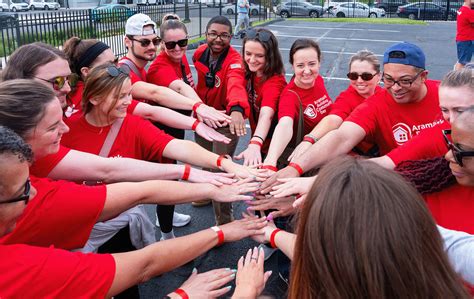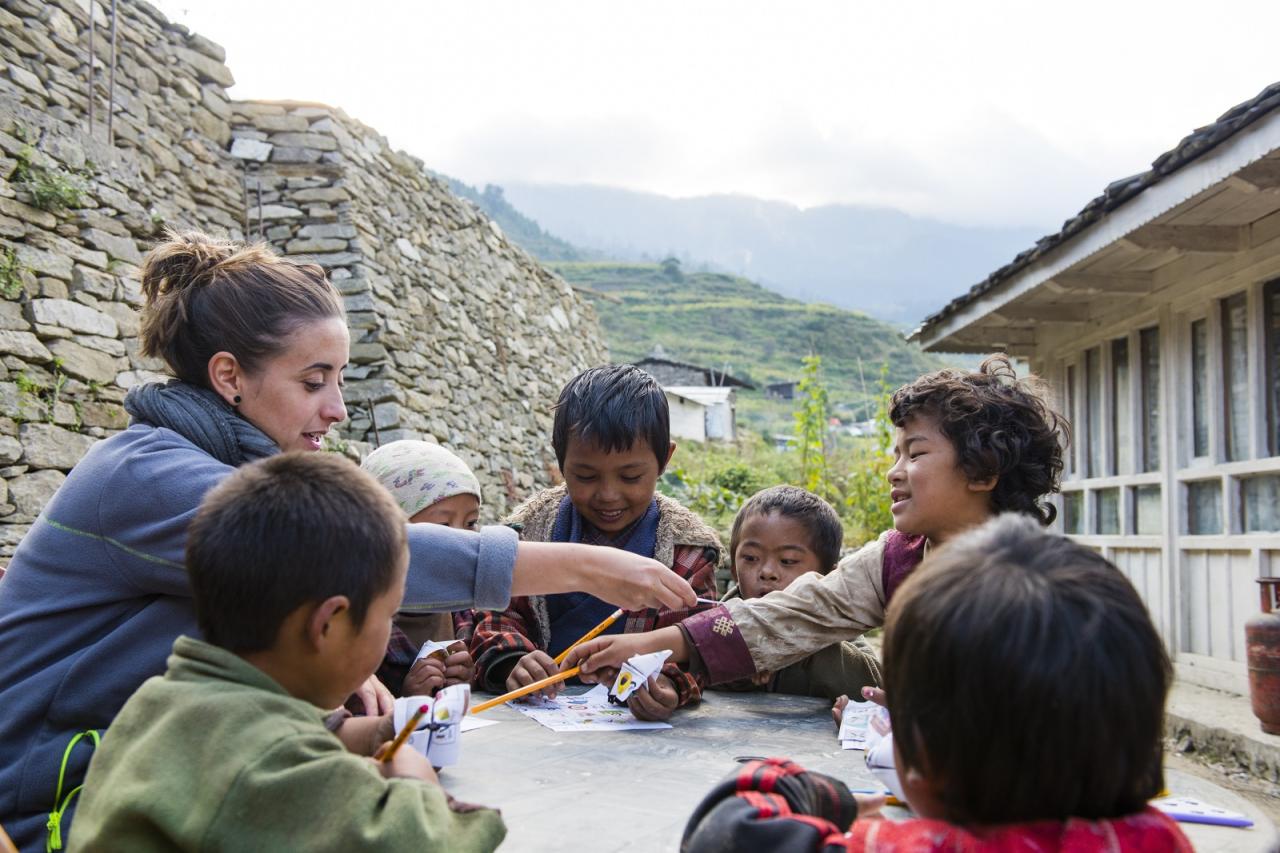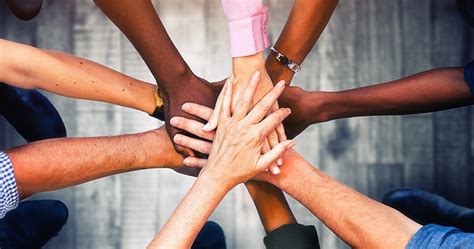In an increasingly digitized and globalized world, the profound human need for connection often feels paradoxically harder to satisfy. While digital platforms offer vast networks, they frequently lack the depth and tangible support found in proximate relationships. This highlights the enduring and vital importance of community building, especially at the local level. Creating and nurturing strong local communities isn’t merely about gathering people; it’s about weaving a resilient social fabric that provides mutual support, fosters a sense of belonging, and empowers collective action for shared well-being. For individuals seeking a deeper sense of connection and for organizations aiming to foster engagement, understanding the art and science of community building: connect locally is paramount. This crucial societal need for genuine interaction makes “community building” a consistently trending and high-value search term, offering significant potential for content creators to generate high Google AdSense revenue through empathetic, actionable, and insightful guidance. This comprehensive article will delve into the transformative power of local community, explore various strategies for its development, provide practical implementation steps, and illustrate how these collective efforts can profoundly enhance individual lives and strengthen entire neighborhoods.
The Indispensable Role of Local Community
At its core, local community refers to a group of people living in the same geographic area, sharing common interests, and often interacting with one another. Beyond mere proximity, a strong local community provides tangible and intangible benefits that are fundamental to human flourishing. It acts as a buffer against isolation, a source of shared resources, and a platform for collective impact.
The significance of robust local communities includes:
- Fostering a Sense of Belonging: In an age of widespread loneliness, feeling connected to a group of people who share your space, values, or interests is fundamental to psychological well-being.
- Providing Mutual Support and Resilience: Local communities are often the first line of defense during crises, offering practical help, emotional solace, and collective problem-solving. This shared resilience makes neighborhoods stronger.
- Enhancing Personal Well-being: Studies consistently show that strong social ties correlate with improved mental and physical health, reducing stress, and increasing overall happiness.
- Facilitating Resource Sharing: From lending a cup of sugar to organizing a neighborhood watch, local connections enable efficient sharing of resources, knowledge, and skills, making daily life more manageable and sustainable.
- Promoting Civic Engagement and Collective Action: When people feel connected, they are more likely to participate in local initiatives, vote, volunteer, and advocate for improvements that benefit everyone, leading to tangible positive changes in their environment.
- Preserving Local Identity and Culture: Communities often share traditions, local businesses, and unique characteristics. Strong local ties help preserve and celebrate these aspects, preventing homogenization.
- Boosting Local Economies: Vibrant local communities often support local businesses, creating a positive feedback loop that retains wealth within the area and generates more opportunities for residents.
Ultimately, effective community building transforms a collection of individuals into a supportive, dynamic, and thriving ecosystem, enriching the lives of its members and creating a more livable and enjoyable environment for all.
Core Principles: The Foundation of Thriving Local Communities
Building a strong local community isn’t accidental; it’s a deliberate process guided by fundamental principles that foster trust, participation, and sustainability.
A. Intentional Connection and Engagement
The first step in community building is often an act of conscious effort to reach out and initiate interactions. It requires moving beyond passive coexistence to active engagement.
- Start Small: Begin with simple gestures like greeting neighbors, striking up conversations at local shops, or inviting a few people for coffee. Grand initiatives can be intimidating.
- Identify Shared Interests: Look for common ground. Do you all love gardening, have young children, enjoy a particular sport, or care about a specific local issue? Shared interests are powerful connectors.
- Be Present and Approachable: Regularly participate in local events, frequent local businesses, and be open to spontaneous conversations. A friendly demeanor makes you approachable.
- Listen Actively: When engaging, truly listen to what others say, their concerns, their joys, and their ideas. This builds trust and shows respect.
- Offer Help and Be Reciprocal: Don’t just ask for favors; offer your assistance when you see a need. Reciprocity is a cornerstone of strong relationships.
B. Creating Inclusive Spaces and Opportunities
A truly strong community embraces diversity and ensures that everyone feels welcome, valued, and has opportunities to participate. Exclusivity fragments, while inclusivity unites.
- Welcome Newcomers: Make a conscious effort to greet and integrate new residents. A simple welcome note or invitation can make a huge difference.
- Ensure Accessibility: Consider physical accessibility (ramps, wide doorways) and social accessibility (diverse language options, events catering to different ages and abilities) in community spaces and activities.
- Respect Diverse Perspectives: Recognize that individuals from different backgrounds bring unique insights and experiences. Foster an environment where differing opinions can be discussed respectfully.
- Address Barriers to Participation: Understand why some people might not be participating (e.g., childcare issues, transportation, language barriers) and work to mitigate those challenges.
- Promote Equity: Actively work to ensure that all members of the community have fair access to resources and opportunities, regardless of socioeconomic status, race, or other factors.
C. Fostering Communication and Information Sharing
Effective communication is the lifeblood of a healthy community, ensuring everyone is informed, connected, and heard.
- Establish Clear Communication Channels: Utilize a variety of methods to reach people:
- Online Platforms: Local social media groups (Facebook, WhatsApp), neighborhood apps (Nextdoor), or community websites.
- Traditional Methods: Flyers, bulletin boards at local shops or community centers, neighborhood newsletters (physical or email).
- In-Person Meetings: Regular town halls or informal gatherings where people can connect face-to-face.
- Encourage Two-Way Dialogue: Ensure that communication isn’t just top-down. Provide opportunities for residents to voice concerns, share ideas, and provide feedback.
- Promote Transparency: Be open about decisions, challenges, and successes within the community.
- Celebrate Successes and Milestones: Share positive news about community achievements, individual accomplishments, and upcoming events. This fosters pride and optimism.
- Manage Conflict Constructively: Develop methods for addressing disagreements or issues within the community in a way that promotes understanding and resolution, rather than division.
D. Developing Shared Vision and Collective Action
A strong community often unites around common goals and works together to achieve them, translating shared interests into tangible improvements.
- Identify Common Needs and Desires: What are the most pressing issues or shared aspirations of the residents? (e.g., a safer park, a community garden, better local schools, a neighborhood clean-up).
- Empower Resident Leadership: Encourage and support residents to take ownership of projects and initiatives. Provide training or resources where needed.
- Collaborate on Projects: Organize collective activities that require teamwork, such as neighborhood clean-ups, fundraising events for a local cause, or establishing a community garden.
- Celebrate Progress and Achievements: Acknowledge and celebrate every step forward, no matter how small. This reinforces positive behavior and motivates continued engagement.
- Advocate Collectively: When the community speaks with a united voice on local issues (e.g., zoning, public services), it has much greater influence.
E. Leveraging Existing Assets and Resources
Strong communities recognize and build upon what they already have, rather than solely focusing on what’s missing.
- Identify Local Strengths: What unique skills, talents, businesses, or natural resources exist within the community?
- Support Local Businesses and Organizations: Patronize local shops, restaurants, and service providers. Collaborate with them on community events.
- Utilize Public Spaces: Parks, community centers, libraries, and even sidewalks can be activated for community activities.
- Engage Volunteers: Tap into the willingness of residents to contribute their time and energy.
- Seek Partnerships: Collaborate with local government, non-profits, schools, and other organizations to amplify efforts and access additional resources.
Key Strategies and Tactics for Local Community Building
With these core principles in mind, let’s explore concrete strategies and practical tactics that can be implemented to effectively build and strengthen local connections.
A. Organize Regular Community Events and Gatherings
Structured and informal events provide critical opportunities for interaction and relationship-building.
- Neighborhood Potlucks or BBQs: Simple, low-pressure ways for people to meet and share food.
- Community Garden Initiatives: A shared space for growing food fosters collaboration and provides fresh produce.
- Local Skill-Sharing Workshops: Offer sessions where residents can teach or learn practical skills (e.g., basic repairs, cooking, crafting).
- Neighborhood Clean-up Days: A collective effort that visibly improves the area and fosters shared pride.
- Seasonal Festivals or Block Parties: Larger events that celebrate the community’s identity and bring many people together.
- “Meet Your Neighbor” Walks: Organized strolls through the neighborhood, allowing people to discover local spots and chat.
- Parent/Caregiver Playdates: Regular meet-ups for those with young children, building vital support networks.
- Book Clubs or Game Nights: Smaller, interest-based gatherings for deeper connection.
B. Activate and Utilize Public Spaces
Parks, plazas, and community centers are vital civic assets that can become hubs of community life.
- Pop-up Events: Temporary markets, art displays, or performances in underutilized public spaces.
- Community Boards/Message Hubs: Physical or digital boards in common areas for sharing local news, events, and needs.
- Shared Tools or Libraries: A community shed for tools or a little free library encourages sharing and interaction.
- Art Installations: Community-created murals or public art can foster pride and beautify spaces.
- Flexible Seating: Provide benches, tables, or movable chairs in public areas to encourage lingering and interaction.
C. Leverage Technology for Connection, Not Isolation
Digital tools can be powerful enablers of local connection if used strategically.
- Dedicated Online Neighborhood Groups: Platforms like Nextdoor, Facebook Groups, or WhatsApp groups for quick communication, sharing recommendations, and organizing impromptu meet-ups.
- Community Websites/Newsletters: Central hubs for official announcements, event calendars, and resident spotlights.
- Skill-Sharing Apps: Platforms connecting residents willing to offer or seek local services/skills.
- Online Polls for Community Decisions: Empowering residents to vote on local issues or event ideas.
- Virtual Meet-and-Greets: For large or busy communities, occasional online meetings can help initial connections before in-person gatherings.
D. Support and Highlight Local Businesses
Local businesses are often anchors of a community and can serve as informal gathering spots.
- “Shop Local” Campaigns: Encourage residents to patronize neighborhood businesses.
- Host Community Events: Partner with local cafes, restaurants, or shops to host events.
- Create a Local Business Directory: Make it easy for residents to find and support businesses in their area.
- Feature Business Owners: Highlight local entrepreneurs and their stories in community newsletters or social media.
- Offer Community Discounts: Local businesses provide special offers for residents to foster loyalty.
E. Establish Formal and Informal Leadership Structures
While organic growth is vital, some level of organization can sustain momentum and address complex issues.
- Neighborhood Associations: Formal groups that advocate for residents, manage community projects, and organize events.
- Resident Leaders/Block Captains: Individuals who take initiative to connect people on their street or within their building.
- Task Forces for Specific Projects: Temporary groups formed to address a particular need (e.g., park renovation, traffic calming).
- Mentorship Programs: Pairing new residents with long-time residents for integration and knowledge transfer.
- Community Ambassadors: Volunteers who actively reach out to isolated residents or new arrivals.
Measuring Success and Sustaining Community Growth

Building a thriving local community is an ongoing process that requires patience, adaptability, and a way to gauge its impact.
A. Defining Success Metrics
Success in community building isn’t always quantifiable by traditional business metrics, but can be observed through:
- Increased Participation: Higher attendance at local events, more active members in online groups, increased volunteer sign-ups.
- Resident Feedback: Surveys or informal conversations indicating a stronger sense of belonging, safety, and satisfaction.
- New Initiatives: The emergence of new resident-led projects or groups.
- Problem Resolution: The community’s ability to collectively identify and address local challenges.
- Reduced Isolation: Anecdotal evidence or surveys showing fewer residents reporting feelings of loneliness.
- Increased Local Economic Activity: Growth in local businesses or increased resident spending within the area.
B. Overcoming Common Challenges
Community building can face hurdles, but proactive strategies can mitigate them.
- Apathy and Busyness: Many people are overstretched. Start with low-commitment activities, emphasize convenience, and highlight clear benefits.
- Lack of Initial Momentum: It takes consistent effort to get things going. Don’t be discouraged by low turnout initially. Celebrate small wins.
- Conflict and Disagreement: Disagreements are inevitable. Establish clear communication guidelines, encourage active listening, and focus on shared goals.
- Lack of Resources: Leverage volunteers, seek small grants, partner with local businesses, or crowdsource funds for projects.
- Leadership Burnout: Distribute responsibilities, empower new leaders, and ensure self-care for organizers.
- Exclusivity: Actively work to be inclusive, reaching out to diverse groups and ensuring events cater to various needs and interests.
C. Sustaining Momentum and Adapting to Change
A vibrant community is dynamic and evolves over time.
- Regular Communication: Keep residents informed and engaged through consistent updates.
- Fresh Ideas and Activities: Periodically introduce new events or projects to keep interest high.
- Rotate Leadership: Encourage new people to step into leadership roles to bring fresh perspectives and prevent burnout.
- Celebrate Anniversaries and Milestones: Recognize the ongoing effort and success of the community.
- Embrace New Technologies: Adapt to emerging communication tools and platforms as they become relevant.
- Seek Feedback Continually: Regularly ask residents what they need, what’s working, and how things can improve.
The Future of Local Connection: Resilient and Digitally Enhanced

As global challenges intensify and the digital world continues to evolve, the importance of robust local communities will only grow. The future of community building will likely see:
- Hybrid Models: A seamless integration of digital platforms with in-person events, leveraging technology to facilitate and amplify real-world connections.
- Hyper-Local Focus: A greater emphasis on specific block-by-block or micro-neighborhood initiatives, tailoring efforts to unique local needs and identities.
- Climate Resilience: Communities increasingly organizing around shared environmental challenges and sustainability efforts, such as local food systems, energy sharing, and disaster preparedness.
- Intergenerational Connection: More deliberate efforts to bridge age gaps, creating opportunities for elders to share wisdom and for younger generations to bring new energy and skills.
- Data-Driven Community Development: Utilizing anonymized local data (e.g., public transport usage, local spending patterns) to better understand community needs and target interventions.
- Well-being as a Core Metric: A shift from purely economic or infrastructural metrics to explicitly measuring the well-being, happiness, and social cohesion of residents.
Ultimately, community building: connect locally is a powerful testament to the enduring human spirit’s desire for belonging and mutual support. It’s an active process of cultivating relationships, creating shared experiences, and working collaboratively towards common goals. By intentionally investing in these local connections, individuals enrich their own lives, contribute to the resilience of their neighborhoods, and collectively build a stronger, more compassionate society. This ongoing endeavor is not just good for people; it’s fundamental to a thriving future, making it a perennially relevant and impactful subject for a broad audience seeking meaningful engagement and deeper connections in their lives.











